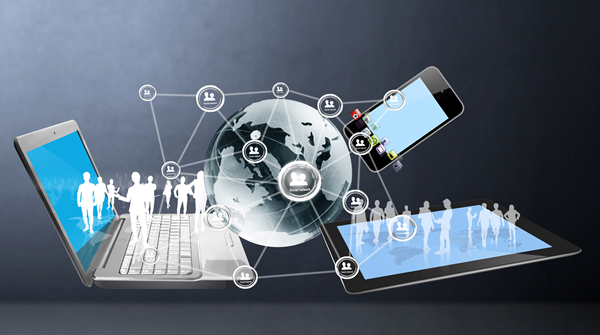ATD Blog
Social Learning and Dunbar’s Number
Thu Oct 13 2016

When people ask me how to stay in business as a consultant, I tell them that they need to get to know people and build relationships. That is, really make a personal connection with someone by taking the time to sit down to a cup of coffee, working on a project together, or participating in an event together.
When people you know share their experiences with you, your knowledge and experience multiplies by association. People in your personal and professional network help you see yourself from different perspectives, and sometimes identify blind spots you didn’t even know existed. What’s more, meaningful interactions with a variety of people will help you build a network of support that can facilitate how you learn and grow.
No doubt, everyone should take time to build their professional network. But there’s one scientific barrier: Dunbar’s Number.
Who is Dunbar?
Anthropologist Robin Dunbar says that we can’t maintain more than about 150 relationships (somewhere between 100-200). This limit to the size of social groups within a species seems to correlate to the size of the brain’s neocortex relative to the rest of the brain. For example, monkeys maintain social groups of about 50 and they have a smaller relative neocortex than humans.
Dunbar’s Number can be further broken down into the level of intimacy in those relationships. Only about five people are very close friends, and maybe 15 good friends. The number considers for another 50 people who are family or family-like friends. The remaining relationships can be classified as friendly acquaintances.
Is Dunbar right? Think about the time it takes to maintain relationships with your closest friends and how that competes with the time you need to spend with family or business colleagues. To initiate and cultivate a new relationship at work or elsewhere is to sacrifice the time you need to maintain an existing relationship. To have a new best friend is to let another friendship lose some of its closeness.
This begs the question: How does Dunbar’s Number affect your ability to build a professional network, especially if you’re already at your limit.
Overcoming Dunbar’s Number
I’m not one to argue with science (okay, maybe I am), but I think social media and modern communication opens the door on this limit on relationships. I agree that we can only maintain so many relationships, especially at appropriate levels of intimacy. However, there are ways to expand your network beyond 150, which will open doors to personal growth and new opportunities.
Events: While only 150 relationships are possible on a day-to-day basis, a concentrated event wipes out that limit to temporarily allow for up to 150 personal interactions within the context of an event. Think of a conference, for example. At this sort of event, you are released from maintaining other relationships. Use that temporary freedom to talk to new people, grab a drink, or have dinner with other acquaintances. You won’t remember everyone after the event, but some of them will remember you. Experiences later down the road can result from such temporary connections.
Make Notes: Our finite memory plays a role in how many relationships we can maintain. If you make a note about your encounter with someone, your memory is free to forget that information until your next encounter. Whenever I ask someone for a business card, I make a note on the card to remember what we talked about. The need for a prompt to remember someone does not mean that the encounter cannot still be meaningful.
Master Multiple Worlds: We all live in a number of layered social “worlds.” You have your family and your close friends, but you also have the groups of people you know as part of different aspects of your life—like work, your children’s school, a place of worship, athletic involvement, or professional-interest clubs. Just being familiar with the names of people in these groups and keeping at least one or more closer connections from each can keep you connected to everyone in that group, which connects you with their connections as well.
Social Media: Today’s modern social platforms are the power tools for making connections in professional circles and maintaining relationships with old acquaintances. Dunbar dangles his number over social media every time you find yourself in a black hole of time that begins to affect productivity and real-life relationships. However, despite the time-sucking dangers of social media, online networking can help you build and maintain professional connections to dozens of groups all across the world. With the appropriate skills, you can find new social worlds to be a part of, sharing in experiences that can teach you more about the world around you.
Bottom Line
Taking time to build relationships with people and then maintaining those relationships takes time. Use that time wisely. Prioritize maintenance of your closest connections with family and dear friends; then connect with people outside of your inner circle—even if you only connect a few times over the years. These extended connections establish a web to additional networks that can help you get work done by providing access to ideas you might not have otherwise.
